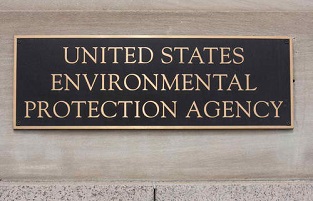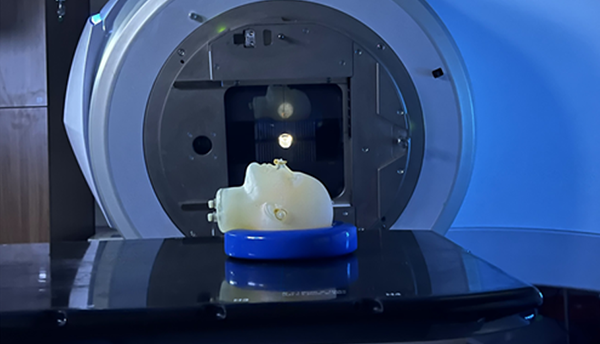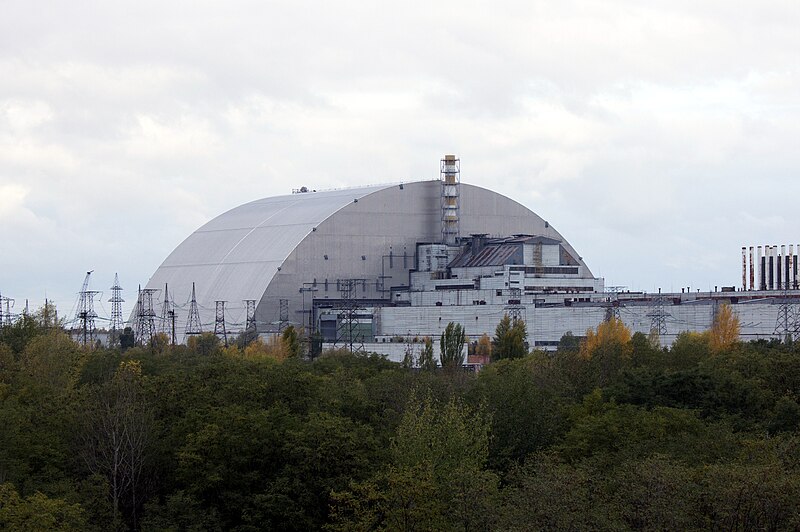Nuclear professionals: Establish standing now to improve operational radiation limits
On August 3, 2014, the window will close on a rare opportunity to use the political process to strongly support the use of science to establish radiation protection regulations. Though it is not terribly difficult for existing light water reactors and fuel cycle facilities to meet the existing limits from 40 CFR 190 regarding doses to the general public and annual release rate limits for specific isotopes, there is no scientific basis for the current limits. If they are maintained, it would hinder the deployment of many potentially valuable technologies that could help humanity achieve a growing level of prosperity while achieving substantial reductions in air pollution and persistent greenhouse gases like CO2.
In January 2014, the U.S. Environmental Protection Agency issued an Advanced Notice of Proposed Rulemaking (ANPR) to solicit comments from the general public and affected stakeholders about 40 CFR 190, Environmental Radiation Protection Standards for Nuclear Power Operations.
The ANPR page has links to summary webinars provided to the public during the spring of 2014, including presentation slides, presentation audio, and questions and answers. This is an important opportunity for members of the public, nuclear energy professionals, nuclear technical societies, and companies involved in various aspects of the nuclear fuel cycle to provide comments about the current regulations and recommendations for improvements. Providing comments now, in the information-gathering phase of a potential rulemaking process, is a critical component of establishing standing to continue participating in the process.
 It also avoids a situation where an onerous rule could be issued and enforced under the regulator's principle that "we provided an opportunity for comment, but no one complained then."
It also avoids a situation where an onerous rule could be issued and enforced under the regulator's principle that "we provided an opportunity for comment, but no one complained then."
The existing version of 40 CFR 190-issued on January 13, 1977, during the last week of the Gerald Ford administration-established a limit of 0.25 mSv/year whole body dose and 0.75 mSv/year to the thyroid for any member of the general public from radiation coming from any part of the nuclear fuel cycle, with the exception of uranium mining and long-term waste disposal. Those two activities are covered under different regulations. Naturally occurring radioactive material is not covered by 40 CFR 190, nor are exposures from medical procedures.
40 CFR 190 also specifies annual emissions limits for the entire fuel cycle for three specific radionuclides for each gigawatt-year of nuclear generated electricity: krypton-85 (50,000 curies), iodine-129 (5 millicuries), and Pu-239 and other alpha emitters with longer than one year half-life (0.5 millicuries).
It is important to clarify the way that the U.S. federal government assigns responsibilities for radiation protection standards. The Nuclear Regulatory Commission has the responsibility for regulating individual facilities and for establishing radiation protection standards for workers, but the EPA has a role and an office of radiation protection as well.
The Atomic Energy Act of 1954 initially assigned all regulation relating to nuclear energy and radiation to the Atomic Energy Commission (AEC). However, as part of the President's Reorganization Plan No. 3 of October 1970, President Nixon transferred responsibility for establishing generally applicable environmental radiation protection standards from the AEC to the newly formed EPA:
...to the extent that such functions of the Commission consist of establishing generally applicable environmental standards for the protection of the general environment from radioactive material. As used herein, standards mean limits on radiation exposures or levels or concentrations or quantities of radioactive material, in the general environment outside the boundaries of locations under the control of persons possessing or using radioactive material.
Before the transfer of environmental radiation responsibilities from the AEC to the EPA, and until the EPA issued the new rule in 1977, the annual radiation dose limit for a member of the general public from nuclear fuel cycle operations was 5 mSv-20 times higher than the EPA's limit.
The AEC had conservatively assigned a limit of 1/10th of the 50 mSv/year applied to occupational radiation workers, which it had, in turn, conservatively chosen to provide a high level of worker protection from the potential negative health effects of atomic radiation.
The AEC's occupational limit of 50 mSv was less than 1/10th of the previously applied "tolerance dose" of 2 mSv/day, which worked out to an annual limit of approximately 700 mSv/year. That daily limit recognized the observed effect that damage resulting from radiation doses was routinely repaired by normal physiological healing mechanisms.
Aside: After more than 100 years of human experience working with radiation and radioactive materials, there is still no data that prove negative health effects for people whose exposures have been maintained within the above tolerance dose, initially established for radiology workers in 1934. End Aside.
From the 1934 tolerance dose to the EPA limit specified in 1977 (and still in effect), requirements were tightened by a factor of 2800. The claimed basis for that large conservatism was a lack of data at low doses, leading to uncertainty about radiation health effects on humans. Based on reports from the National Academy of Sciences subcommittee on the Biological Effect of Ionizing Radiation (BEIR), the EPA rule writers simply assumed that every dose of radiation was hazardous to human health.
The EPA used that assumption to justify setting limits that were quite low, but could be met by the existing technology if it was maintained in a like-new condition for its entire operating life. Since the rule writers assumed that they were establishing a standard that would protect the public from an actual harm, they did not worry about the amount of effort that would be expended in surveys and monitoring to prove compliance. As gleaned from the public webinar questions and answers, EPA representatives do not even ask about compliance costs, because they are only given the responsibility of establishing the general rule; the NRC is responsible for inspections and monitoring enforcement of the standard.
The primary measured human health effects used by the BEIR committee in formulating their regulatory recommendations were determined based on epidemiological studies of atomic bomb survivors. That unique population was exposed to almost instantaneous doses greater than 100 mSv. Based on their interpretation of data from the Life Span Study of atomic bomb victims, which supported a linear relationship between dose and effect in the dose regions available, the BEIR committee recommended a conservative assumption that the linear relationship continued all the way down to a zero dose, zero effect origin.
For the radionuclide emissions limits, the EPA chose numbers that stretch the linear no-threshold dose assumption by applying it to extremely small doses spread to a very large population.
The Kr-85 standard is illustrative of this stretching. It took several hours of digging through the 240-page final environmental impact statement and the nearly 400-page collection of comments and responses to determine exactly what dose the EPA was seeking to limit decades ago, and how much it thought the industry should spend to achieve that protection.
The EPA determined that allowing the industry to continue its then-established practice of venting Kr-85 and allowing that inert gas to disperse posed an unacceptable risk to the world's population.
It calculated that if no effort was made to contain Kr-85, and the U.S. industry grew to a projected 1000 GW of electricity production by 2000, an industry with full recycling would release enough radioactive Kr-85 gas to cause about 100 cases of cancer each year.
The EPA's calculation was based on a world population of 5 billion people exposed to an average of 0.0004 mSv/year per individual.
At the time that this analysis was performed, the Barnwell nuclear fuel reprocessing facility was under construction and nearly complete. It had not been designed to contain Kr-85. The facility owners provided an estimate to the EPA that retrofitting a cryogenic capture and storage capability for Kr-85 would cost $44.6 million.
The EPA finessed this exceedingly large cost for tiny assumed benefit by saying that the estimated cost for the Barnwell facility was not representative of what it would cost other facilities that were designed to optimize the cost of Kr-85 capture. It based that assertion on the fact that Exxon Nuclear Fuels was in a conceptual design phase for a reprocessing facility and had determined that it might be able to include Kr-85 capture for less than half of the Barnwell estimate.
GE, the company that built the Midwest Fuel Recovery Plant in Morris, Illinois, provided several comments to the EPA, including one about the low cost-benefit ratio of attempting to impose controls on Kr-85:
Comment: The model used to determine the total population dose should have a cutoff point (generally considered to be less than 0.01 mSv/year) below which the radiation dose to individuals is small enough to be ignored....
In particular, holdup of krypton-85 is not justified since the average total body dose rate by the year 2000 is expected to be only 0.0004 mSv/year.
Response: Radiation doses caused by man's activities are additive to the natural radiation background of about 0.8-1.0 mSv/year [note: the generally accepted range of background radiation in the mid 1970s, as indicated by other parts of the documents was 0.6 - 3.0 mSv/yr] whole-body dose to which everyone is exposed. It is extremely unlikely that there is an abrupt discontinuity in the dose-effect relationship, whatever its shape or slope. at the dose level represented by the natural background that would be required to justify a conclusion that some small additional radiation dose caused by man's activities can be considered harmless and may be reasonably ignored.
For this reason, it is appropriate to sum small doses delivered to large population groups to determine the integrated population dose. The integrated population dose may then be used to calculate potential health effects to assist in making judgements on the risk resulting from radioactive effluent releases from uranium fuel cycle facilities, and the reasonableness of costs that would be incurred to mitigate this risk.
Existing Kr-85 rules are thus based on collective doses, and a calculation of risks, that is now specifically discouraged by both national (NCRP) and international (ICRP) radiation protection bodies. It is also based on the assumption of a full-recycle fuel system and 10 times as much nuclear power generating capacity as exists in the United States today.
Since the level specified is applied to the entire nuclear fuel cycle industry in the United States, the 40 CFR 190 ANPR asks the public to comment about the implications of attempting to apply limits to individual facilities. This portion of the discussion is important for molten salt reactor technology that does not include fuel cladding to seal fission product gases, and for fuel cycles that envision on-site recycling using a technology like pyroprocessing instead of transporting used fuel to a centralized facility for recycling.
There are many more facets of the existing rule that are worthy of comment, but one more worth particular attention is the concluding paragraph from the underlying policy for radiation protection, which is found on the last page of the final environmental impact statement:
The linear hypothesis by itself precludes the development of acceptable levels of risk based solely on health considerations. Therefore, in establishing radiation protection positions, the Agency will weigh not only the health impact, but also social, economic, and other considerations associated with the activities addressed.
In 1977, there was no consideration given to the fact that any power that was not generated using a uranium or thorium fuel cycle had a good chance of being generated by a power source producing a much higher level of carbon dioxide. In fact, the EPA in 1977 had not even begun to consider that CO2 was a problem. That "other consideration" must now play a role in any future decision-making about radiation limits or emission limits for radioactive noble gases.
If EPA bureaucrats are constrained to use the recommendations of a duly constituted body of scientists as the basis for writing its regulations, the least they could do before rewriting the rules is to ask the scientific community to determine if the linear no-threshold (LNT) dose response model is still valid. The last BEIR committee report is now close to 10 years old. The studies on which it was based were conducted during an era in which it was nearly impossible to conduct detailed studies of DNA, but that limitation has now been overcome by advances in biotechnology. There is also a well-developed community of specialists in dose response studies that have produced a growing body of evidence supporting the conclusion that the LNT is not "conservative"-it is simply incorrect.
Note: Dose rates from the original documents have been converted into SI units.

Rod Adams is a nuclear advocate with extensive small nuclear plant operating experience. Adams is a former engineer officer, USS Von Steuben. He is the host and producer of The Atomic Show Podcast. Adams has been an ANS member since 2005. He writes about nuclear technology at his own blog, Atomic Insights.






